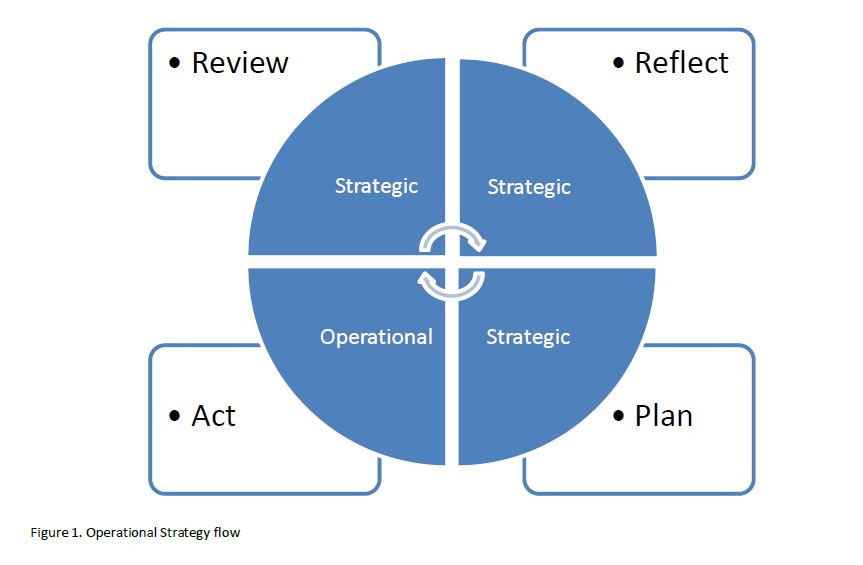Operations and Strategy: The Two Hats Of Management
Posted on May 24, 2018
From Operations To Strategy
I have just completed speaking at a two-day workshop this week with a very astute group of national managers. From delivering approximately 7 hours of content, it gave me a fresh appreciation of just how much we as managers and leaders have to deal with at an operational level on a daily basis. Below is some of the content from one of the sessions that relate to the importance of taking time to lift our eyes to think 'future'; to disengage our brains from the operational tasks at hand and turn our focus to strategy.
The Switch Of Hats
Taking the daily operational hat off to focus on the future can be a challenge for the most adept business owner or manager. The day to day running of our businesses and organisations often demand our all, leaving little energy and focus for anything else. We tend to get caught up at ground level, fighting fires, dealing with staff issues and meeting budgetary shortfalls. Our minds are on making today happen, often neglecting the future planning and strategic progress that is so essential for success. When this is our ‘normal’, the ideal future gets delayed. The switch of hats, from operations to strategy needs to be a planned activity as more often than not, does not occur on its own. A study in recent years concerning the disciplines of Australia’s leading CEO’s revealed that of the top three practices, the scheduling of time out for weekly review and reflection along with planning the future were paramount to their success. A further study by the Centre for Management and Organizational Effectiveness (CMOE) that surveyed a wide range of influential US executives indicated that on average 25 minutes per day were spent on strategising. We would do well to practice the same. Being able to jump off at regular intervals the business or organisational boat we are sailing on; to sit on the sand and stare out at the horizon - thinking, planning, reflecting, will help us when jumping back onto the boat in operational mode. Timeout spent in this manner will enable us to take the ship more directly to its destination. These are some areas to centre on when practising this: • Review of progress and results in recent days and weeks – the good, the bad, the ugly • Key issues requiring immediate attention • Activities that are irrelevant to the current journey and need to be stopped • What were the successes and how can we further build on them? • What is our destination? • Are we on track as far as the milestones previously established? Taking time out to Review, Reflect and Plan is essential for managers and owners if they are to effectively lead and manage a growing organisation. Review Is about looking back at the past week, month, year or years to see what has ACTUALLY happened in terms of numbers, key indicators, growth or decline, staff, inefficiencies, successes etc. Reflect What is the review process and actual data communicating? Taking time to reflect on the meaning of this is essential for the next stage. Plan Based on what HAS taken place and in light of your key goals, how do we continue progressing from here to there? From actual to ideal. What do we need to do, change and enact in order to drive this ship forward? Planning is also about scheduling the key activities identified from the above process into your calendar. It assists in taking it from your mind to the page, to the actual operational (action) stage. If you are similar to me, spending too much time at the coal face of operations can make one a little weary over time. Taking time out in order to think future; while advantageous for our organisations, it can also return significant benefits to our personal lives and can be its own source of inspiration and freshness.View latest blog articles
